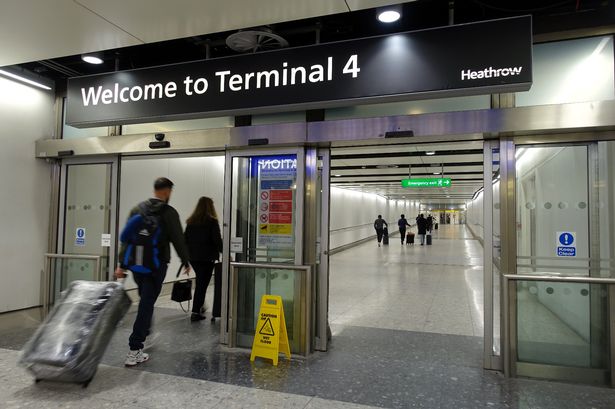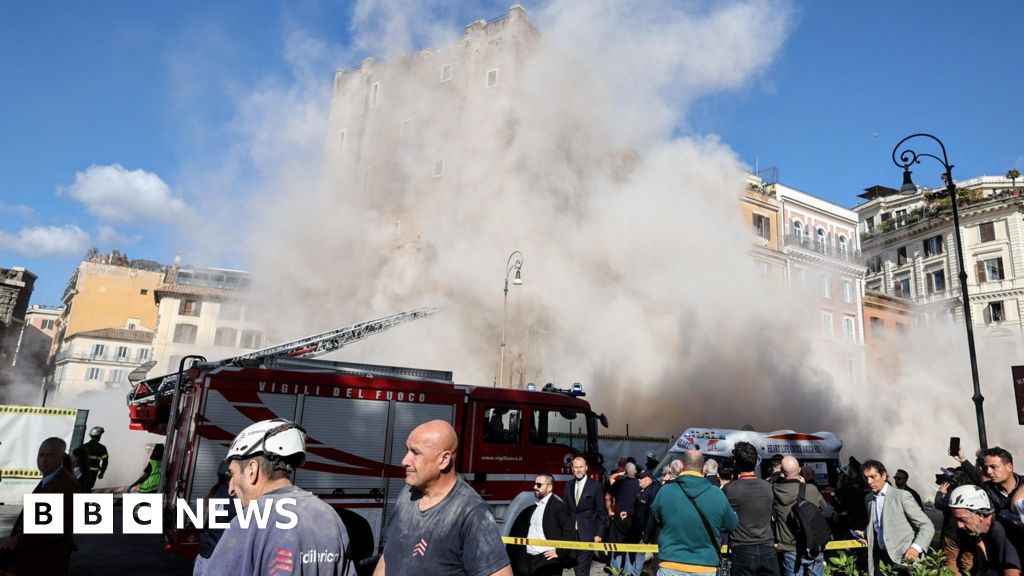High school girls’ volleyball: City Section playoff results and pairings
CITY SECTION PLAYOFFS
MONDAY’S RESULTS
Quarterfinals
DIVISION III
#1 Panorama d. #9 Verdugo Hills, 28-26, 25-23, 25-21
#12 New West Charter d. #4 Sun Valley Magnet, 25-19, 14-24, 25-18, 25-18
#3 Chavez d. #6 L.A. Hamilton, 26-24, 22-25, 25-12, 25-18
#2 Sun Valley Poly d. #10 Alliance Levine, 25-11, 25-9, 25-13
DIVISION IV
#1 Marquez d. #8 Van Nuys, 25-8, 25-11, 24-26, 25-20
#13 Fairfax d. #5 Fulton, 25-14, 25-13, 25-18
#3 Huntington Park d. #6 Animo Robinson, 3-0
#7 South East d. #2 Bell, 25-19, 25-19, 27-25
DIVISION V
#9 Santee d. #1 Middle College, 25-14, 28-26, 18-25, 25-15
#5 Legacy d. #4 L.A. Wilson, 25-17, 25-21, 25-18
#11 Sotomayor d. #3 RFK Community, 25-15, 23-25, 25-9, 25-22
#7 Jefferson d. #18 Monroe, 25-14, 25-20, 25-19
TUESDAY’S SCHEDULE
(Matches at 7 p.m. unless noted)
Semifinals
OPEN DIVISION
#5 El Camino Real at #1 Venice
#6 Taft vs. #2 Palisades at Brentwood
DIVISION I
#4 L.A. Marshall at #1 LA University
#3 Granada Hills Kennedy at #2 Grant
Note: Semifinals Divisions II-V Nov. 5 at higher seeds; Finals (all divisions) Nov. 7-8
Michigan suspects charged in alleged ‘ISIS-inspired Halloween terror attack’

Nov. 3 (UPI) — The Justice Department announced Monday that “multiple suspects” have been charged in Michigan in an alleged Halloween plot to support the terror group ISIS in an “attack on American soil.”
Monday’s charges come three days after Federal Bureau of Investigation Director Kash Patel announced that the FBI had “stopped a potential terrorist attack in Michigan before it could unfold.”
“Thanks to swift action and coordination with our partners, a violent plot tied to international terrorism was disrupted,” he said Friday.
On Monday, Patel provided more details.
“Two Michigan men planned an ISIS-inspired Halloween terror attack near Detroit — stockpiling weapons, scouting targets and training at gun ranges,” Patel wrote in a second post on X. “This FBI acted fast, followed the evidence, and likely saved countless lives.”
According to a Justice Department press release Monday, FBI agents made the arrests Friday in eastern Michigan.
“This newly unsealed complaint reveals a major ISIS-linked terror plot with multiple suspects arrested in the Eastern District of Michigan targeting the United States,” said U.S. Attorney General Pam Bondi. “According to the complaint, subjects had multiple AR-15 rifles, tactical gear and a detailed plan to carry out an attack on American soil.”
No information was provided on the identity of the suspects, as the FBI called the investigation “ongoing.”
“With today’s unsealed criminal complaint, the American people can see the results of months of tireless investigative work where the FBI acted quickly and likely saved many lives,” Patel added. “We’ll continue to follow the facts, uphold the law and deliver justice for the American people.”
The special agent in charge of the FBI Detroit Field Office credited local authorities for their work to “ensure the safety of the citizens of Michigan and beyond.”
“Defending the homeland will always be one of our top priorities,” said Special Agent Jennifer Runyan. “We will utilize every available federal resource to disrupt and dismantle any individuals or groups who threaten national security.”
US airports hit by major delays from record-breaking government shutdown | Aviation News
Absences surge among US air traffic controllers, who have been working for more than a month without pay.
Published On 4 Nov 2025
Airports across the United States are experiencing major delays and cancellations due to an uptick in absences from air traffic controllers, who are under “immense stress and fatigue” from the ongoing, record-breaking US government shutdown, according to the Federal Aviation Administration (FAA).
More than 16,700 US flights were delayed and another 2,282 were cancelled over the weekend from Friday to Sunday, according to FlightAware, a US website that provides real-time flight tracking.
Recommended Stories
list of 4 itemsend of list
The delays continued into Monday evening in the US, as FlightAware counted more than 4,000 delays and 600 cancellations across major airports, like Chicago O’Hare, Dallas Fort Worth, Denver and Newark.
The FAA said on X that half of its “Core 30” facilities at major US airports were experiencing staffing shortages due to the shutdown, with absences at New York-area airports hitting 80 percent.
Nearly 13,000 air traffic controllers have been working without pay for weeks, ensuring the safety of more than 50,000 daily operations across the national airspace system (NAS).
As we head into this weekend, a surge in callouts is straining staffing levels at multiple…
— The FAA ✈️ (@FAANews) November 1, 2025
Air traffic controllers, who number nearly 13,000 across the US, are classified as “essential workers”, which means they have been working without pay since the shutdown began on October 1.
But the FAA said that there had been a surge in absences, which had forced it to reduce the flow of air traffic in the US to maintain safety standards.
“The shutdown must end so that these controllers receive the pay they’ve earned and travellers can avoid further disruptions and delays,” the FAA said on X on Friday. “When staffing shortages occur, the FAA will reduce the flow of air traffic to maintain safety. This may result in delays or cancellations.”
US Secretary of Transportation Sean Duffy told CBS News’s Face the Nation programme on Sunday that the delays will continue to maintain airline safety.
“We work overtime to make sure the system is safe. And we will slow traffic down, you’ll see delays, we’ll have flights cancelled to make sure the system is safe,” Duffy said, according to a transcript of the programme.
Duffy said that although air traffic controllers were using their absences to work second jobs elsewhere, they would not be fired. “When they’re making decisions to feed their families, I’m not going to fire air traffic controllers,” he said.
The government shutdown is due to enter its 35th day on Tuesday in the US, when it will tie with the 2018-2019 shutdown as the longest in US history.
At least 670,000 civilian federal employees have been furloughed due to the shutdown, while about 730,000 are working without pay, according to the Washington, DC-based Bipartisan Policy Center.
Hollywood A lister confirmed for Download Festival alongside three HUGE US bands as headliners
DOWNLOAD festival has landed a Hollywood A-lister to perform at the rock and metal event next summer.
The 2026 line-up was announced this evening and features the surprising actor, as well as three American bands topping the bill.


Download will return to Leicestershire’s Donington Park from June 10 to 14, with The Matrix and John Wick star Keanu Reeves set to play.
The band Dogstar, for which he plays bass, are among a series of acts which have been officially unveiled.
Limp Bizkit will headline the Friday night, followed by Guns N’ Roses on the Saturday.
Linkin Park will close the festival on the Sunday night, marking their first performance at the festival since frontwoman Emily Armstrong was brought in.
They previously headlined four times between 2004 and 2014 with their original line-up.
And it comes after Linkin Park played a sold out concert at Wembley Stadium in June.
Tickets are already on sale for the 23rd annual festival, which will also feature performances from Pendulum, Trivium, The All-American Rejects, Mastodon and Bush.
Other acts on the line-up include Feeder, Ash, Tom Morello, The Pretty Reckless and Those Damn Crows.
Limp Bizkit’s booking comes just a fortnight after it was revealed that bassist and founding member Sam Rivers had died aged 48.
They paid tribute to him last month when they described him as not “just our bass player” but “the soul in the sound.”
The band said: “From the first note we ever played together, Sam brought a light and a rhythm that could never be replaced.
“His talent was effortless, his presence unforgettable, his heart enormous.”
The full rundown of artists was revealed at a launch event at the Barbican in central London, where guests were entertained by fortune tellers and a string quartet.
Granit Xhaka: How midfielder has taken Sunderland into top four
This is Xhaka’s second spell in England, having played 297 times for Arsenal from 2016 until 2023.
He then joined Bayer Leverkusen where he won the title under Xabi Alonso in their unbeaten domestic season in 2023-24.
Erik ten Hag, then the Leverkusen boss, insisted Xhaka would not be sold this summer.
But the midfielder left for Sunderland, and Ten Hag was sacked a few weeks into the season.
“I didn’t expect to come back after Germany but you never know where you land,” said Xhaka.
“To be back made me happy. I knew the project to bring experience and show the guys day by day.
“It makes me happy to score a goal.”
Xhaka was a bit of a pantomine villain – and sometimes much maligned – at Arsenal.
He was sent off five times for the Gunners and spent six weeks as captain in 2019, clashed with his own fans and was stripped of the armband.
But things went better under Mikel Arteta and he became an important player before leaving in 2023 for Germany.
Carragher said: “After what he went through at Arsenal, he showed great character to come back from that. The impact he has had, if he can be part of a Sunderland team who finishes in the top 10 – or even just stays up – he will be remembered for a very long time.”
Former Sunderland striker Marco Gabbiadini told BBC Radio Newcastle: “He exemplifies a top professional.
“When he was an Arsenal player at times you felt like he was a bit of a villain. Over the years we have seen him mature and develop.
“We’ve seen a slightly more restrained version of Xhaka, but it’s actually better than the fully committed, blowing steam out of his ears sort of player that we saw at Arsenal.
“He’s a little bit more measured, calmer and a better professional. To have that in your squad especially when you’ve got a young squad, and everyone believes in him, he’s a talisman.
“We need to wrap him in cotton wool and keep him going for 38 games.”
2 girls hospitalized after thrown from Ferris wheel in Louisiana

Nov. 3 (UPI) — Two young girls were in intensive care at a hospital after they were thrown from a Ferris wheel at a festival near Baton Rouge, La.
The girls, both under 13 years old, around noon Saturday were ejected from the ride’s basket while it was rotating and they fell 20 feet onto a steel platform in New Roads, which is part of Pointe Coupee Parish, about 40 miles northwest of Baton Rouge. A third girl clung to the basket and was rescued.
WAFB-TV reported one girl has a possible brain bleed and the other has broken bones. They were taken to the Children’s Hospital in Baton Rouge, NBC News reported.
Sheriff Rene Thibodeaux told NBC News that the girls were sitting in the basket when it tipped over.
“As it was going around, it was just, like, stuck at an angle and they flipped out of it,” Ronald Brasseaux, who witnessed the incident, told WAFB-TV.
He said he felt unsafe riding the same ferris wheel the previous day.
“They need to take this thing down,” he told the TV station.
Brasseaux said he believes the basket’s hinges might have gotten stuck.
The ride didn’t have any restraints.
“I feel like it should be seatbelts on there, because, mind you, it’s just a gate on there, like somebody can easily fall out, a child can easily just open the gate and then step out,” witness Madison Fields told WBRZ-TV.
Another visitor, Eddie Jones, told WAFB: “We were in line to buy tickets to the Ferris wheel, and I heard a girl scream, and I looked over, and the Ferris wheel car was kicked over. I don’t know how it got in that position, but it was stuck. Yeah, I’ll probably never get on another Ferris wheel.”
He posted video of the accident on Facebook.
The ride and another one nearby were closed to the public amid an investigation.
The state’s fire marshal’s office is required to perform safety checks on rides and attractions.
The Ferris wheel is operated by Crescent City Amusements, based in Slidell, La.
In 2023, a ride operated by the company, the Ring of Fire, stranded riders upside-down for more than three hours in northeastern Wisconsin. An investigation found a lighting transformer lodged into the track.
The Ferris wheel was part of the annual Harvest Festival, which supports the local agriculture-based community,” according to its website. It ran from Friday through Sunday on False River.
The Ferris wheel is named after its inventor, civil engineer George Washington Gale Ferris Jr., who designed the ride for the 1893 World’s Columbian Exposition in Chicago.
Russia-Ukraine war: List of key events, day 1,349 | Russia-Ukraine war News
Here are the key events from day 1,349 of Russia’s war on Ukraine.
Published On 4 Nov 2025
Here is how things stand on Tuesday, November 4:
Fighting
- Russia said on Monday that its troops had advanced in the eastern Ukrainian city of Pokrovsk, an important transport and logistics hub that they have been trying to capture for more than a year, but Ukraine said its forces were holding on.
- Ukrainian President Volodymyr Zelenskyy told reporters that Pokrovsk remained under severe pressure, though Russian troops had made no gains in the past day.
- He also said that Russia was massing troops by the nearby town of Dobropillia, where Kyiv’s forces advanced earlier this year in a successful counteroffensive. He described the situation in Dobropillia as complicated.
- Ukraine’s 7th Rapid Response Corps said that Ukrainian forces had thwarted a Russian attempt to cut off a supply route to Pokrovsk from Rodynske, to the north.
- Elsewhere, Russia said its troops had also attacked Ukrainian forces near another eastern city, Kupiansk, and dislodged them from four fortified positions in the industrial zone on the left bank of the Oskol River. Zelenskyy said that up to 60 Russian soldiers remained in Kupiansk, and that Ukrainian forces were trying to clear them.
- The Russian Ministry of Defence said its forces had carried out heavy overnight strikes on a Ukrainian military airfield, a military equipment repair base and military-industrial facilities, as well as gas infrastructure facilities that supported them.
- Ukraine’s military said it hit an oil refinery in Russia’s Saratov region, adding that a successful strike and resulting fire had been recorded on one of the refining facilities.
- Ukraine also said that it had hit Russian military logistical facilities in the Russian-occupied Ukrainian region of Luhansk.
Weapons
- Zelenskyy announced that Kyiv will set up offices for arms exports and joint weapons production in Berlin and Copenhagen this year.
- Zelenskyy added that Ukraine plans to launch mass production of its domestically produced missiles – the Flamingo and Ruta – by the end of this year.
- He also said that a Ukrainian delegation would visit Washington, DC, next week for further talks on a US-Ukraine drone deal, which Kyiv hopes will bolster ties with the administration of US President Donald Trump.
Politics and diplomacy
- The European Commission (EC) said in a draft text that Ukraine is showing “remarkable commitment” to joining the European Union, but must reverse recent negative trends in the fight against corruption and accelerate rule of law reforms, according to the Reuters news agency.
- The agency reported that the EC also said that Kyiv needed to make more progress on judicial independence, fighting organised crime and respecting civil society.
- Russian Prime Minister Mikhail Mishustin departed for a two-day visit to China, which the Kremlin said is significant and includes planned talks with Chinese President Xi Jinping.
Economy
- Zelenskyy said Ukraine still needs to raise $750m to secure gas imports for the upcoming winter. The government wants to increase natural gas imports by about 30 percent after Russia sharply intensified its attacks on Ukraine’s energy sector in recent weeks, focusing on gas facilities.
Gorgeous ‘frozen in time’ town with cobblestone streets is oldest in the country
The town is the oldest in the country and was the capital for several hundred years, with wealthy merchants flocking to the thriving trading hub which is well preserved today
A town that is more than a thousand years old sits on the banks of a picturesque lake and is filled with colorful wooden houses.
Sigtuna, often described as Sweden’s first town, is a small and charming destination that blends history and natural beauty. Located just 45 minutes from Stockholm and only a short drive from Arlanda Airport, it is ideal for a day trip if you’re in the modern Swedish capital.
Despite having a population of just 10,000 today, Sigtuna was effectively the capital of Sweden following its founding in 980AD, serving as the royal and commercial center until the 13th century. Although it may have lost its economic and political clout, Sigtuna remains a fascinating place that offers an authentic glimpse into Sweden’s past.
READ MORE: I ditched the UK for the ‘friendliest city in Europe’ once known for its grumpinessREAD MORE: New £20 Ryanair route to beautiful city with 20C November weather and gorgeous beaches
Its rich history is evident at every turn, from the cobbled streets and medieval ruins to the ancient runestones scattered throughout the area. These runestones—over 150 in total—serve as open-air monuments to the Viking Age, engraved with inscriptions commemorating people who lived and traded here more than a thousand years ago. The Sigtuna Rune Stone Walk takes you around the town centre and along the Procession Road, passing a total of 15 rune stones, mostly dating from the 10th and 11th centuries. Each has its own information board and translation of the runic inscription.
The town’s archaeological heritage has been carefully preserved and is well contextualised at the Sigtuna Museum.
One of the town’s main attractions is Stora Gatan, Sweden’s oldest main street. “This street is special because its layout has not changed for nearly a millennium,” writes Atlas Obscura.
Sigtuna’s founder, King Erik the Victorious, wanted to make the city the country’s capital, but this was not a straightforward task. To get the public, and more importantly, wealthy landowners, on board, he divided up the land into plots and gave them away to influential people. They would not live on the land, but would often visit and flaunt their riches.
“Over time, it truly became the capital of Sweden, and travelers from all over the world would arrive here with their goods. Underneath the road, archeologists have found items from the Byzantine empire, Asia, and the old Russian empire,” Atlas Obscura continues.
Sadly, all of the old buildings except for a few churches have been broken down or were burned in fires. New houses were constructed and the city evolved, but the main street remains much the same.
Lined with colourful wooden houses, boutique shops, cosy cafés, and art galleries, it’s a beautiful place for a wander of an afternoon, and one that will make you feel as if you’ve been transported back in time.
Many of the shops sell local handicrafts, design pieces, and Swedish-made souvenirs, making it an excellent place to pick up a tasteful nifty-gifty.
The street also leads directly to the picturesque shores of Lake Mälaren, where visitors can stroll along the water, enjoy a fika by the marina, or take a boat trip during the summer months.
Sigtuna’s three medieval church ruins—St. Lars, St. Olaf, and St. Peter’s—stand as atmospheric reminders of the town’s Christian heritage. These stone ruins, surrounded by quiet gardens and walking paths, contrast with the still-active Sigtuna Church, which dates back to the 13th century and remains a focal point for the local community. The blend of old and new architecture gives the town a timeless quality, appealing to travellers interested in both history and culture.
Beyond its historical significance, Sigtuna is known for its relaxed pace and natural surroundings. The town is nestled among forests and lakes, offering plenty of opportunities for outdoor activities such as cycling, kayaking, and hiking. In winter, the frozen lake becomes a natural ice-skating rink, and during the warmer months, visitors can swim, picnic, or simply enjoy the serenity of the landscape. The nearby Sigtunastiftelsen, a cultural and conference centre with a café and beautiful gardens, is another peaceful retreat ideal for reflection or afternoon tea.
Sigtuna offers something that few other destinations can: a living link between the Viking Age and modern Scandinavia. It’s history isn’t confined to museums, but it’s woven into the streets, stones, and scenery.
Do you have a travel story to share? Email [email protected]
Latino artists featured in Hammer Museum’s Made in L.A. biennial
Somehow in Los Angeles, everything comes back to traffic.
While making their works featured in the Hammer Museum’s Made in L.A. biennial, artists Patrick Martinez, Freddy Villalobos and Gabriela Ruiz set out to capture the essence of the city’s crammed streets through different lenses.
For over a decade, the Hammer has curated its Made in L.A. series to feature artists who grapple with the realities of living and making art here. It’s an art show that simultaneously pays homage to legacy L.A. artists like Alonzo Davis and Judy Baca, and gives a platform to newer faces such as Lauren Halsey and Jackie Amezquita.
This year’s show, which opened last month, features 28 artists. As part of that cohort, Martinez, Villalobos and Ruiz bring their lived experiences as Latinos from L.A. to the West Side art institution, drawing inspiration from the landscapes of their upbringing.
While creating their displayed works, Martinez took note of the many neon signs hanging in stores’ windows, leading him to make “Hold the Ice,” an anti-ICE sign, and incorporate bright pink lights into his outdoor cinder block mural, “Battle of the City on Fire.” With flashing lights and a shuttered gate tacked onto a painted wooden panel, Ruiz drew on her experiences exploring the city at night and the over-surveillance of select neighborhoods in the interactive piece, “Collective Scream.” Villalobos filmed Figueroa Street from a driver’s perspective, observing the street’s nighttime activity and tracing the energy that surrounds the place where soul singer Sam Cooke was shot.
This year, Made in L.A. doesn’t belong to a specific theme or a title — but as always, the selected art remains interconnected. These three artists sat down with De Los to discuss how their L.A. upbringing has influenced their artistic practice and how their exhibited works are in conversation. Made in L.A. will be on view until March 1, 2026.
The following conversation has been condensed and edited for clarity.
All three of you seem to put a spotlight on various elements of L.A.’s public spaces. How is your art affected by your surroundings?
Ruiz: I really got to explore L.A. as a whole, through partying and going out at night. I prefer seeing this city at night, because there isn’t so much traffic. That’s how I started my art practice. I would perform in queer nightlife spaces and throw parties in cheap warehouses. With my commute from the Valley, I would notice so much. I wouldn’t speed through the freeway. I’d instead take different routes, so I’d learn to navigate the whole city without a GPS and see things differently.
Martinez: That’s also how I started seeing neons. I had a studio in 2006 in downtown, off 6th and Alameda. I would wait for traffic to fade because I was staying in Montebello at the time. I would drive down Whittier Boulevard at night. And you see all the neon signs that have a super saturated color and glow bright. I thought about its messaging. None of the businesses were open that late. They were just letting people know they were there.
Ruiz: Specifically in this piece [“Collective Scream”], there’s a blinking street lamp. It reminds me of when I would leave raves and would randomly see this flickering light. It’s this hypnotizing thing that I would observe and take note of whenever I was on the same route. There’s also a moving gate, [in my piece,] that resembles the ones you see when you’re driving late at night and everything’s gated up.
Villalobos: You do experience a lot of L.A. from your car. It’s a cliche. But f— it. It’s true. When I moved out of L.A., I felt a little odd. I missed the bubble of my car. You can have what seems to be a private moment in your car in a city that’s packed with traffic and so many people. It made me think about what that means, what kind of routes people are taking and how we cultivate community.

Patrick Martinez’s “Battle of the City on Fire,” made in 2025, was inspired by the work of the muralist collective, named the East Los Streetscapers.
(Sarah M Golonka / smg photography)
It’s interesting that you all found inspiration in the biggest complaints about L.A. Maybe there’s something to think about when it comes to the way those born here think of car culture and traffic.
Martinez: I see its effects even with the landscapes I make. I’ll work from left to right, and that’s how we all look at the world when we drive. I always think about Michael Mann movies when I’m making landscapes, especially at night. He has all those moments of quiet time of being in the car and just focusing on what’s going on.
Beyond surveying the streets, your works touch on elements of the past. There’s a common notion that L.A. tends to disregard its past, like when legacy restaurants shut down or when architectural feats get demolished. Does this idea play any role in your work?
Martinez: The idea of L.A. being ashamed of its past pushed me to work with cinder blocks [in “Battle of the City on Fire”]. One of the main reasons was to bring attention to the East Los Streetscapers, the muralists who painted in East L.A. [in the 1960s and ‘70s as a part of the Chicano Mural Movement]. There was this one mural in Boyle Heights that was painted at a Shell gas station. It was later knocked down and in the demolition pictures, the way the cinder blocks were on the floor looked like a sculptural painting. It prompted me to use cinder blocks as a form of sculpture and think about what kind of modern-day ruins we pass by.
Villalobos: Speaking about L.A. as a whole feels almost too grand for me. But if I think about my specific neighborhood, in South Central, what comes to my mind is Black Radical Tradition. It’s where people are able to make something out of what other people might perceive as nothing. There’s always something that’s being created and mixed and mashed together to make something that, to me, is beautiful. It’s maybe not as beautiful to other people, but it’s still a new and creative way to see things and understand what comes before us.
Ruiz: Seeing my parents, who migrated to this country, come from nothing and start from scratch ties into that idea too. Seeing what they’ve been able to attain, and understanding how immigrants can start up businesses and restaurants here, speaks so much to what L.A. is really about. It’s about providing an opportunity that everybody has.
So it’s less about disregarding the past and more about making something out of nothing?
Martinez: It ties back to necessity, for me. Across this city, people come together by doing what they need to do to pay rent. It’s a crazy amount of money to be here. People need to regularly adjust what they do to survive. Recently, I’ve been seeing that more rapidly. There are more food vendors and scrolling LED signs, advertising different things. Once you understand how expensive this backdrop can be, that stuff sits with me.

Freddy Villalobos’ “waiting for the stone to speak, for I know nothing of aventure,” is an immersive work in which viewers can feel loud vibrations pass as they, figuratively, travel down Figueroa Street.
(Sarah M Golonka / smg photography)
We’ve talked a lot about how the past affects L.A. and the role it plays in your art. Does a future L.A. ever cross your mind?
Villalobos: I feel very self-conscious about what I’m gonna say. But as much as I love L.A. and as much as it helped me become who I am, I wouldn’t be too mad with it falling apart. A lot of people from my neighborhood have already been moving to Lancaster, Palmdale and the Inland Empire. When I go to the IE, it feels a little like L.A. and I’m not necessarily mad at that.
Ruiz: It’s really difficult to see what the future holds for anybody. Even with art, what’s going to happen? I don’t know. It’s really challenging to see a future when there’s a constant cycle of bad news about censorship and lack of funding.
Martinez: It’s murky. It’s clouded. This whole year has been so heavy, and everyone talking about it adds to it, right? We’re facing economic despair, and it’s all kind of heavy. Who knows what the future will hold? But there are definitely moves being made by the ruling class to make it into something.
Heathrow Airport urges Brits to sign up for key alerts ahead of booking a trip
Anyone travelling abroad is advised to consult Foreign, Commonwealth and Development Office guidance before setting off
Heathrow Airport has issued an important message to any Brits planning to travel abroad soon. The London-based facility posted its alert on X, formerly Twitter, earlier today, encouraging prospective travellers to sign up for key alerts.
“Looking to book your next trip from #Heathrow?”, the post read. “Whether you’re relaxing on the beach or engaging in extreme sports, make sure to check the latest @FCDOtravelGovUK travel advice for your destination and sign up to http://GOV.UK email alerts.”
The Foreign, Commonwealth and Development Office, or FCDO, is the UK Government department responsible for handling the country’s foreign affairs and providing advice to citizens abroad. Online, it offers an A-to-Z list of 226 countries and territories, including details on ongoing incidents, safety, entry requirements, and other essential travel information.
Similar travel guidance related to health can also be found at the TravelHealthPro site, operated by the National Travel Health Network and Centre (NaTHNaC). This offers specific details on disease outbreaks and ongoing concerns, along with vaccination guidance.
Travellers are generally advised to check health advisories and vaccination details at least eight weeks before their departure. Beyond this, the FCDO encourages Brits to use its foreign travel checklist to ensure they are fully prepared.
The checklist, available on the FCDO website, details the following key points:
- Research your destination and check the latest advice and warnings.
- Get insured as soon as you book the trip.
- Check you have all the necessary documents for travel.
- Consider your health, including relevant vaccination advice and rules on taking medication abroad.
- Prepare for the unexpected and have backup plans for accessing key information abroad.
- Know that you can contact the FCDO in London 24 hours a day on 020 7008 5000 for advice. You may also contact your nearest British embassy abroad.
Despite this, the Government’s website warns: “Our foreign travel checklist aims to help you plan for a trouble-free trip. It is not exhaustive. No foreign travel can be guaranteed as safe, and you take personal responsibility for your own travel.”
For more information, head to the FCDO’s travel advice website or TravelHealthPro here.
What counts as a liquid in luggage when travelling abroad?
The UK Government’s full list of what is considered hand luggage liquids on flights is below:
- Cosmetics and toiletries, including creams, lotions, oils, perfumes, mascara and lip gloss
- Liquid or semi-liquid foods, for example, soup, jam, honey and syrups
- Any other solutions and items of similar consistency
- Sprays, including shaving foam, hairspray and spray deodorants
- Contact lens solution
- Pastes, including toothpaste
- Gels, including hair and shower gel
- All drinks, including water
Liquid carry-on rules differ depending on the airport. Before your trip, verify the regulations at your departure airport, any airports you’ll pass through, and on your return journey.
The Government’s advice adds: “At most airports, you cannot take liquids in containers larger than 100ml through security. This still applies if the container is only part full. Some airports may allow you to take liquid in containers that hold up to two litres of liquid.
“Check for exemptions if you’re taking baby milk or food, medicines, food for special dietary requirements or liquids bought in duty free.”
Dodgers celebrate repeat World Series title with another stadium rally
The celebration had hardly begun, when Shohei Ohtani first voiced the theme of the day.
“I’m already thinking about the third time,” he said in Japanese, standing atop a double-decker bus in downtown Los Angeles with of thousands of blue-clad, flag-waving, championship-celebrating Dodgers fans lining the streets around him for the team’s 2025 World Series parade.
Turns out, he wasn’t alone.
Two days removed from a dramatic Game 7 victory that made the Dodgers baseball’s first repeat champion in 25 years, the team rolled through the streets of downtown and into a sold-out rally at Dodger Stadium on Monday already thinking about what lies ahead in 2026.
With three titles in the last six seasons, their modern-day dynasty might now be cemented.
But their goal of adding to this “golden era of Dodger baseball,” as top executive Andrew Friedman has repeatedly called it, is far from over.
“All I have to say to you,” owner and chairman Mark Walter told the 52,703 fans at the team’s stadium rally, “is we’ll be back next year.”
“I have a crazy idea for you,” Friedman echoed. “How about we do it again?”
When manager Dave Roberts took the mic, he tripled down on that objective: “What’s better than two? Three! Three-peat! Three-peat! Let’s go.”
When shortstop Mookie Betts, the only active player with four World Series rings, followed him, he quadrupled the expectation: “I got four. Now it’s time to fill the hand all the way up, baby. ‘Three-peat’ ain’t never sounded so sweet. Somebody make that a T-shirt.”
For these history-achieving, legacy-sealing Dodgers, Monday was a reminder of the ultimate end goal — the kind of scene that, as they embark on another short winter, will soon fuel their motivations for another confetti-filled parade this time next year.
“For me, winning a championship, the seminal moment of that is the parade,” Friedman said. “The jubilation of doing it, when you get the final out, whatever game you win it in, is special. That night is special. But to be able to take a breath and then experience a parade, in my mind, that is what has always driven me to want to win.”
-
Share via
“[To] do this for the city, that’s what it’s all about,” first baseman Freddie Freeman added. “There’s nothing that feels as important as winning a championship. And if so happens to be three in a row, that’s what it is. But that’s what’s gonna drive us to keep going.”
Last November, the Dodgers’ first parade in 36 years was a novelty.
Much of the group had been part of the 2020 title team that was denied such a serenade following that pandemic-altered campaign. They had waited four long years to experience a city-wide celebration. The reception they received was sentimental and unique.
Now, as third baseman Max Muncy said with a devious grin from atop a makeshift stage in the Dodger Stadium outfield, “it’s starting to get a little bit comfortable up here. Let’s keep it going.”
“Losing,” star pitcher and World Series MVP Yoshinobu Yamamoto added, in English, in a callback to one of his memorable quotes from this past October, “isn’t an option.”
Doing it won’t be easy.
This year, the Dodgers’ win total went down to 93 in an inconsistent regular season. They had to play in the wild-card round for the first time since the playoffs expanded in 2022. And in the World Series, they faced elimination in Games 6 and 7, narrowly winning both to complete their quest to repeat.
“I borderline still can’t believe we won Game 7,” fan favorite Kiké Hernández said in a bus-top interview.
But, he quickly added, “We’re all winners. Winners win.”
Thus, they also get celebrations like Monday’s.
As it was 367 days earlier, the Dodgers winded down a parade route in front of tens of thousands of fans from Temple Street to Grand Avenue to 7th Street to Figueroa. Both on board the double-decker buses and in the frenzied masses below, elation swirled and beverages flowed.

Once the team arrived at Dodger Stadium, it climbed atop a blue circular riser in the middle of the field — the final symbolic steps of their ascent back to the mountaintop of the sport.
Anthony Anderson introduced them to the crowd, while Ice Cube delivered the trophy in a blue 1957 Chevy Bel-Air.
Familiar scenes, they are hoping become an annual tradition.
“Job in 2024, done. Job in 2025, done,” Freeman said. “Job in 2026? Starts now.”
The Dodgers did take time to recognize their newfound place in baseball history, having become just the sixth MLB franchise to win three titles in the span of six years and the first since the New York Yankees of 1998 to 2000 to win in consecutive years.
Where last year’s parade day felt more like an overdue coronation, this one served to crystallize their legacy.
“Everybody’s been asking questions about a dynasty,” Hernández said. “How about three in six years? How about a back-to-back?”
And, on Monday, all the main characters of this storybook accomplishment got their moment in the sun.
There was, as team broadcaster and rally emcee Joe Davis described him, “the Hall of Fame-bound” Roberts, who now only trails Walter Alston in team history with three World Series rings.
“We talked about last year, wanting to run it back,” he said. “And I’ll tell you right now, this group of guys was never gonna be denied to bring this city another championship.”
There was Game 7 hero Miguel Rojas calling up surprise October closer Roki Sasaki, on his birthday, to dance to his “Bailalo Rocky” entrance song; a request Sasaki sheepishly obliged by pumping his fist to the beat.
Yamamoto, coming off his heroic pitching victories in Games 6 and 7, received some of the day’s loudest ovations.
“We did it together,” he said. “I love the Dodgers. I love Los Angeles.”
Muncy, Ohtani and Blake Snell also all addressed the crowd.
“I’m trying to get used to this,” Snell said.
“I’m ready to get another ring next year,” Ohtani reiterated.
One franchise face who won’t be back for that chase: Clayton Kershaw, who rode into the sunset of retirement by getting one last day at Dodger Stadium, fighting back tears as he thanked the crowd at the end of his illustrious (and also Hall of Fame-bound) 18-year career.
-
Share via
“Last year, I said I was a Dodger for life. And today, that’s true,” Kershaw said. “And today, I get to say that I’m a champion for life. And that’s never going away.”
Kershaw, of course, is one of the few still around from the club’s dark days of the early 2010s, when money was scarce and playoff appearances were uncertain and parades were only things to dream about — not expect.
As he walks away, however, the team has been totally transformed.
Now, the Dodgers have been to 13 straight postseasons. They’ve set payroll records and bolstered their roster with a wave of star signings. They’ve turned the pursuit of championships into a yearly expectation, proud but unsatisfied with what they’ve achieved to this point.
“I think, definitionally, it’s a dynasty,” said Friedman, the architect of this run with the help of Walter’s deep-pocketed Guggenheim ownership group. “But that to me, in a lot of ways, that kind of caps it if you say, ‘OK, this is what it is.’ For me, it’s still evolving and growing. We want to add to it. We want to continue it, and do everything we can to put it at a level where people after us have a hard time reaching.”
On Monday, they raised that bar another notch higher.
“This parade was the most insane thing I’ve ever witnessed, been a part of,” Kershaw said. “It truly is the most incredible day ever to be able to end your career on.”
On Tuesday, the Dodgers’ long road toward holding another one begins.
“I know they’re gonna get one more next year,” Kershaw told the crowd. “And I’m gonna watch, just like all of you.”
N. Korea fires artillery rockets during Hegseth’s visit to JSA

The North Korean news agency (KCNA) shows the test-firing of new-type large-caliber multiple launch rocket system. File Photo by KCNA/EPA
SEOUL, Nov. 4 (Yonhap) — North Korea fired around 10 artillery shells from its multiple rocket launcher system earlier this week, coinciding with a joint visit by the defense chiefs of South Korea and the United States to the Demilitarized Zone (DMZ) separating the two Koreas, the South’s military said Tuesday.
The North launched the rockets toward waters off the northern Yellow Sea at around 4 p.m. Monday, the Joint Chiefs of Staff (JCS) said, adding an analysis of the weapons test is under way.
The launch came less than an hour before U.S. Defense Secretary Pete Hegseth arrived at Camp Bonifas, just south of the Joint Security Area (JSA) within the DMZ, for a joint visit to the tense border with Defense Minister Ahn Gyu-back.
Separately, the military confirmed the North also fired another 10 artillery rocket shells at around 3 p.m. Saturday, when President Lee Jae Myung and Chinese President Xi Jinping held summit talks in the southeastern city of Gyeongju on the occasion of the Asia-Pacific Economic Cooperation (APEC) gathering.
“Our military is closely monitoring North Korea’s various activities under a steadfast South Korea-U.S. combined defense posture and maintains capabilities and a posture capable of overwhelmingly responding to any threat,” the JCS said.
While the North’s launches involving multiple rocket launchers do not violate United Nations Security Council resolutions, its 240mm multiple rocket launcher puts Seoul and its adjacent areas in target range.
In October, North Korea fired multiple short-range ballistic missiles, just about a week before U.S. President Donald Trump was set to visit South Korea on the occasion of the APEC summit.
(END)
Copyright (c) Yonhap News Agency prohibits its content from being redistributed or reprinted without consent, and forbids the content from being learned and used by artificial intelligence systems.
Worker dies after partial collapse of medieval tower in Rome
A worker who was trapped after part of a medieval tower collapsed in the heart of Rome, has died, according to hospital officials.
Octay Stroici was pulled free at 23:00 local time (22:00 GMT), nearly twelve hours after a section of the Torre dei Conti, on the edge of the famous Roman Forum and close to the Colosseum, gave way and trapped him beneath.
His heart stopped in the ambulance, and doctors at the hospital he was rushed to were unable to save him.
The Romanian foreign ministry said Stroici was a Romanian national, as was another worker among three others pulled from the rubble. One is said to be in a critical condition.
Stroici’s rescue was initially described as an exceptional feat by firefighters who had worked late into the night. Rescue teams used drones and rubble clearers to try to reach him, despite the risk that the fragile tower could collapse further.
He had been conscious and talking to the emergency workers throughout the rescue. His wife was also at the scene.
Stroici had been carrying out conservation work on the medieval tower which is part of the Roman Forum, one of this city’s busiest tourist sites. But this particular building had been empty and abandoned for many years.
The Rome Prosecutor’s Office has opened an investigation into the incident.
Efforts to rescue Stroici – reported to be in his 60s – were interrupted when a second section of the 29m (90ft) high tower began crumbling again, with bricks raining down, creating a huge cloud of dust.
Earlier, Rome prefect Lamberto Giannini had described it as a “very complex situation”. Giannini said that after the initial collapse firefighters had “put up some protection” around the trapped man, so when the second collapse happened, “they obviously shielded him”.
He added that the rescue was a long operation due to having to “mitigate…the enormous risks faced by the people trying to carry out the rescue”.
One firefighter was taken to hospital with an eye problem, according to local media, but the rest were unharmed, eventually resuming their search for the man.
A police chief said there was no imminent danger that the tower will disintegrate.
“My thoughts and deepest sympathies go out to the person currently fighting for his life beneath the rubble, and to his family, for whom I sincerely hope that this tragedy finds a positive outcome,” wrote Italian Prime Minister Giorgia Meloni on X before the rescue was complete.
Another worker, 67-year-old Ottaviano, who was inside at the time of the collapse but escaped from a balcony uninjured, told the AFP news agency: “It was not safe. I just want to go home.”
Rome’s mayor and Italy’s culture minister visited the scene.
The 13th Century tower is part of the Roman Forum, a major tourist attraction in the centre of Rome, but it is separated from the main visitors’ area by a road. The streets all around have been taped off by police as a precaution.
The medieval tower was built by Pope Innocent III as a residence for his brother.
Tuesday 4 November Water Festival Ceremony in Cambodia
The festival marks a reversal of the flow between the Mekong and Tonle Sap rivers. Due to the amount of water deposited during the rainy season, the Tonle Sap river becomes so swollen with water that it reverses the direction of its flow and flows upstream to Tonle Sap lake.
The festival marks the switching of the flow back to its normal direction, signifying the end of the rainy season. Essentially, the festival is a time to give thanks to the rivers as they provide the region with fertile farming land and plenty of fish.
The festival is focused on boat races and concerts. The roots of the boat races can be traced back to the times of the Angkorian kings who would train and evaluate the fighting skills of their water based warriors by holding competitions on the river. These trials in turn honoured the naval victories of the Khmer empire under the leadership of Jayavarman VII in the twelfth century.
First look at the John Lewis Christmas advert 2025 – and it's a tearjerker

The 2025 Christmas advert from John Lewis launches a new campaign, telling shoppers "If you can’t find the words, find the gift"
Source link
Digie own goal sees Leyton Orient beat Tamworth
League One Leyton Orient progress to the second round of the FA Cup after beating National League Tamworth 1-0, thanks to Kennedy Digie’s own goal.
Source link
Trump says he will restrict federal funds for New York City if Mamdani wins | Donald Trump News
United States Republican President Donald Trump says he will restrict federal funds for New York City if Democratic candidate Zohran Mamdani wins the city’s mayoral elections, to be held on Tuesday.
Trump said on his Truth Social platform on Monday that “it is highly unlikely that I will be contributing Federal Funds, other than the very minimum as required”, if Mamdani wins the race.
Recommended Stories
list of 4 itemsend of list
Polls show Mamdani leading against former New York Governor Andrew Cuomo, who is running as an independent after losing to Mamdani in the Democratic primary, and Guardian Angels founder Curtis Sliwa, who is the Republican nominee.
According to the latest RealClearPolitics polls on Monday, Mamdani led with 45.8 percent, maintaining a 14.7-point advantage over Cuomo’s 31.1 percent and a 28.5-point lead over Sliwa’s 17.3 percent.
On the final day of campaigning on Monday, the mayoral candidates raced across New York City’s five boroughs after months of back-and-forth barbs, social media hits and saucy debates.
As the closely-watched election day edged closer, Mamdani led a sunrise walk across the Brooklyn Bridge, flanked by hundreds of supporters, before kicking off the day with a speech at City Hall.
Cuomo, on his part, denounced socialism in the Bronx, visited seniors in Chinatown, and popped off an X post calling Mamdani a “poser”.
And Republican candidate Sliwa greeted supporters in the Coney Island neighbourhood of Brooklyn in his signature red hat, as he spoke at a subway station where a woman was killed on a train last year.
Mamdani and Cuomo’s duelling campaigns have reflected their positions in the New York race: the son of another former New York governor, steeped in the liberal Democratic political establishment, versus a young and little-known assemblyman who would be the city’s first Muslim, first person born in Africa and the first person of South Asian descent to lead New York City.
The mayoral race, which has captured outsized global attention, has seen a record 735,317 early votes cast over the past nine days, more than four times the total for the 2021 election, according to the New York City Board of Elections.
‘Our time is now’
Mamdani, a 34-year-old New York state assemblyman, has galvanised New Yorkers with an optimistic, multilingual campaign that promised free buses, rent freezes and universal childcare, partially paid for by taxing the city’s wealthiest residents.
He reiterated that Trump had signalled his support for Cuomo in a 60 Minutes interview. In recent weeks, Cuomo has appealed to conservatives as a way to up his polling numbers.
“If [Cuomo is] elected as mayor, our city will descend deeper into the darkness that has forced too many of our neighbours to flee, and made it impossible for working people to live lives of dignity,” Mamdani said.
In his City Hall speech on Monday, Mamdani seemed to embrace the seismic shift that his campaign has represented for New York’s politics.
“There were few in this city who dared to imagine that we could win, and what it would mean for a city that has – for too long – served only the wealthy and powerful, at the expense of those who work through sunrises and sunsets,” Mamdani said.
Moments later, the crowd broke out in cheers of, “Our time is now!”
Cuomo, who resigned as governor in 2021 after an independent state probe found he had engaged in a pattern of sexually harassing women, took aim at Mamdani’s democratic socialist promises in his final hours of campaigning, likening them to left-wing governments in Latin America.
“Socialism didn’t work in Venezuela. Socialism didn’t work in Cuba. Socialism is not going to work in New York City,” Cuomo said. Mamdani, however, is a self-described “democratic socialist”.
New York’s most prominent billionaires, including hedge fund manager Bill Ackman, have supported Cuomo’s campaign, with Ackman doling out a total of $750,000 through donation vehicles known as super PACs, CNBC reported last week.
Shrinking Water Sources Stir Farmer-Herder Tensions in Adamawa Community
Bello Gambur dreads going to the stream before 2 p.m.
Every morning, he leaves home with a herd of over 30 cattle, with his staff slung across his shoulders as they head into the bush. For about five hours, he watches them as they graze, rest, and wander, but none can drink. The only stream in the community lies just a short walk away, yet he must wait until 2 p.m. to take them there.
Going earlier, he says, could have deadly consequences.
All his life, the forty-year-old has lived as a herder in Mararaban Bare, a small community in the Numan Local Government Area of Adamawa State, North East Nigeria, where his ancestors migrated and settled a long time ago.
Over the years, the herders lived in peace with their host community, but in 2017, violence broke out over water. The clash claimed many lives, and several properties were destroyed. In October, security operatives stepped in to quell a similar incident.
So, Bello doesn’t mind his herd enduring hours of thirst if it helps keep the fragile peace.

He leads the cattle to the stream when most locals have finished using it and are back at their homes. Bello and the other herders go there between 2 p.m. and 5 p.m. to prevent coming in contact with the locals who visit the stream every morning to bathe, wash, and fetch water for domestic chores.
The rationing also requires the locals to leave before 2 p.m.
However, this arrangement has not ended the clashes between the groups, as locals believe it does little to address deeper grievances.
Tension keeps building
“Irrigation farmers use the water from the canal to farm. And other community members drink the water, the cattle also drink from it, so this is a problem,” Alphonsus Bosso, a 55-year-old farmer and resident of Mararaban Bare, told HumAngle.
He said the tension is unlikely to end soon, especially with the dry season approaching. This competition for access to the stream intensifies during this period.
Alphonsus said a lasting solution would be to provide the herders with their own water source “because we no longer co-exist”. In some other Adamawa communities, humanitarian organisations have already supported the creation of alternative water sources, which have helped ease similar tensions, a model yet to reach Mararaban Bare.

“We used to have canals that served as water sources for our cattle, and we barely used the stream until the canals began to dry up,” said Muza Alhaji Shenya, a 37-year-old herder in the area. He linked the recent drying up of water bodies in the area to industrial expansion, particularly the construction of embankments to store water for sugarcane plantations. HumAngle saw some of these embankments during a visit.

However, environmental experts say the problem extends beyond industrial activity.
Hamza Muhammed Usman, the Executive Director of Environmental Care Foundation, a non-governmental organisation in Adamawa State that promotes a climate-friendly environment, food security, and peacebuilding, explained that prolonged dry spells, erratic rainfall, and deforestation, among other factors, are responsible for the shrinking water bodies in the state.
He said that overgrazing by livestock and human activities such as excessive farming on the same location and mining reduce vegetation cover, which disrupts the natural flow of water into its channels and bodies, especially in local government areas such as Numan, Fufore, some parts of Madagali, Maiha, Gombi, and the southern zone.
Hamza also noted that migration and growing birth rates in the affected areas have increased the competition for water. “There are people from Borno, Gombe, Taraba, and other places trooping into Adamawa for greener pastures. This leads to overdependence on the limited resources,” he said.

‘They pollute the water’
Locals insist that sharing the water with the cattle is unhealthy.
“The cattle are polluting the water with mud and urine,” said Silas Simon, the community leader. “We dilute the water with alum when we want to consume.”
Even this treatment becomes difficult during the dry season, which starts in October.
During the season, the herders in Mararaban Bare are left with two options: lead their cattle to the local stream or trek six kilometres into Bare, the nearest village with multiple water sources. The journey takes about six hours, making the local stream the closest option for many.

One herder, who treks to Bare to avoid being attacked by locals, said his cattle often drink water once a day, mostly in the afternoon, and sometimes, in the evening while returning to their settlement. There, water is provided for them in small containers, but much priority is given to the calves since the water is not enough.
“The cows are getting thinner; their health has deteriorated over the years,” he said. “Every water source is drying up.”
“If we can have alternative water sources, then we won’t go to the stream for water where the people drink from,” Muza said.
There is a borehole in Mararaban Bare, but it barely functions.
Silas noted that if the borehole was functional, locals would use it as a water source and leave the stream for the herders, which would reduce the clashes.
“The borehole barely works. If it ever pumps water, it ceases at any time, so one has to wait for hours before the water runs again. Sometimes, people queue up from morning to evening and get unlucky because it ceases anytime,” he said.

‘No agreement’
Several meetings have been held between the locals and herders to resolve the conflict, but no lasting agreement has been reached apart from a temporary water-use arrangement. Silas said tensions remain high, as youths from both groups often act as the main instigators during clashes.
“We do not wish to provoke anyone; we are only after the welfare of the cattle,” said Alhaji Ngala, the chairperson of herders in the community. He also noted that farms have taken over grazing routes, leaving them with “no freedom”.
“If we can have access to grazing routes and enough water supply, then our minds will be at peace,” Ngala told HumAngle.
Hamza, the climate-friendly environment advocate, urged the government to invest in solar-powered boreholes as a way of promoting clean energy and sustainable water supply across communities facing similar challenges. He also called for stronger conflict-resolution mechanisms across the state.

“Water scarcity is not just an environmental issue but a driver of insecurity, because in a place where there is tension, certain groups can take advantage of the situation to infiltrate such communities and cause problems,” Hamza said.
Although the state government has collaborated with civil society organisations to adopt measures like afforestation, small-scale irrigation projects, and awareness campaigns, among other initiatives, to address the recurring clashes over water and limited resources. Hamza noted that many communities still lack the technical capacity and financial support to sustain these interventions.
“Some of the measures, like afforestation and proper waste management, are not owned properly by the locals,” Hamza said.
He further called for integrated water resource management and inclusive governance to protect watersheds and prevent further land degradation. “Degraded lands can be restored through rotation. Herders should not graze on the same spot for more than five years, and farmers should do the same,” he said.
He also stressed the need for interdependence; farmers relying on cow dung as manure, and herders being granted access to reserved grazing areas.
Molly-Mae Hague breaks silence on Behind It All documentary backlash after being slammed as ‘out of touch’ and ‘bratty’
FORMER Love Island star Molly-Mae Hague has broken her silence on her Behind It All documentary and the backlash she faced.
The 26-year-old successful star and mum of one, was slammed when her new Amazon docuseries, Molly-Mae: Behind It All, was released.
Many viewers of the series admitted the Love Island star’s “bratty behaviour” had “put them off her” after watching the Amazon offering.
Breaking her silence on the backlash and reaction from viewers, Molly-Mae opened up in the introduction of her new YouTube video, which was shared on Monday evening.
The influencer and fashion mogul even revealed she was forced to delete TikTok amid the comments she saw about the series.
Speaking in her vlog, she said: “I had seen what people were saying about the doc and then made the executive decision to basically delete TikTok.”
Read More about Molly-Mae
Molly-Mae added how deleting the app “has been quite frankly one of the best decisions I ever made”.
The reality star then said how though she has grown a thick skin over the years, “there’s something about that app that just feels like so insanely toxic”.
Molly-Mae then explained how she saw her makeup artist scrolling on social media and spotted “at least three things within that short time of me looking at her phone that I didn’t want to see”.
“So, I just felt like, okay, definitely definitely in no way, shape or form rushing to get the app back anytime soon.
“I just want to say that I’ve also received so many incredibly lovely messages and people saying that they’ve also really enjoyed it.
“And that’s literally all I wanted for the doc. It’s never ever been to do anything other than just create something for people to watch and enjoy.
“And I think I’ve definitely definitely learned a lot,” she added.
Molly-Mae then told of how she was nervous about the documentary coming out.
“Like I think even before the premiere, there’s a bit of me in this vlog where I’m like severely anxious,” she explained.
Molly-Mae then said that she had anticipated some of the critique the documentary got.
“I literally said like ‘that’s going to cause this’ and ‘this is going to cause that’.
“I have been doing this job now for a really really long time and I feel like we kind of had a formula that we followed for years that avoids what has happened with the doc from happening.
“And with this drop of the doc like we literally did the complete opposite of what we normally do.
“Like we spoke about things we don’t speak about.
“We kept things in that probably I would never ever show of myself like because with the last drop of the doc everyone was like we want more. We want more.”
Molly-Mae went on: “So, it’s like you give it, but then it’s not like it’s too much or it’s, you know…
“I saw someone saying that they fell asleep halfway through one of the episodes because it was so boring yet they feel like the episodes aren’t long enough.”
She then said how she “really really can’t keep everyone happy” no matter how much she tries.
Luka Doncic and Austin Reaves out for Lakers vs. Trail Blazers
PORTLAND, Ore. — Luka Doncic and Austin Reaves will miss the Lakers’ game in Portland on Monday as the team ruled both out with injuries.
One night after recording a 29-point, 11-rebound, 10-assist triple-double, Doncic is out to manage a lower leg contusion. Reaves, who scored 26 points and 11 assists in the Lakers’ 130-120 win over the Miami Heat, is out with right groin soreness.
This will be the fourth game Doncic has missed this season as he was also sidelined with a minor finger injury and a left leg contusion.
Playing in their second back-to-back of the season, the Lakers will again be short-handed. They had seven standard contract players when they hosted the Trail Blazers on the second night of a back-to-back last week. Portland won 122-108 as Reaves attempted to carry the team with 41 points.
The Lakers could also be without Deandre Ayton, who is questionable with back spasms. He missed Sunday’s game after experiencing pain last Friday in Memphis.
Forward Maxi Kleber was upgraded to questionable with an abdominal strain that has kept him sidelined all season.

































